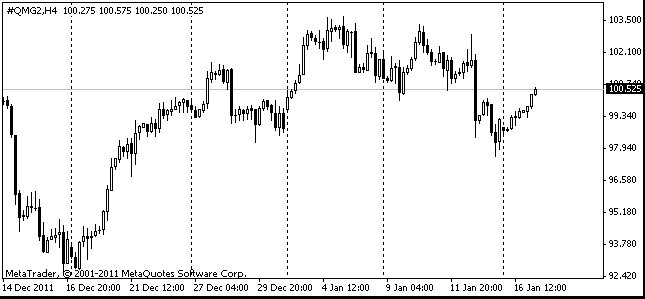EUR/usd
Last Friday and this Monday the range of the EUR/USD fluctuations exceeded 125 pips. On Tuesday the distance between the intraday high and low made 90pips, and yesterday's fluctuations fitted into 60 pips. It will hardly be quiet today. This afternoon the ECB holds its regular meeting. This time no one expects any actions from draghi. Just words. This Italian proved himself to be an eloquent orator, who can make decisive statements and stick to his guns despite resistance of other countries, even of Germany. Earlier Trichet didn't show such firmness. This time we shouldn't expect any new statements from Draghi, except for the already known ones about readiness to buy the bonds of the countries which have turned to the EU for help. Spain should be the first to see this mechanism in action, however the government does everything to put off the inevitable. It's so typical of Europe! In the meantime, the coming statistics seem to be quite good. The final Services PMI data for Germany and France came in a bit worse than initially estimated – 49.7 and 45.0 respectively. However, the EU PMI Composite and Final Services PMI were revised up – both to 46.1. It is a weighty reduction and the lowest level for the last five months, but nevertheless it can be regarded as good news when compared with the lowest level for the 40 months, which was promised by the preliminary estimate. As opposed to Europe the US services sector is gathering pace. The ISM Non-Manufacturing PMI grew to 55.1 in September, which is the highest level since last March. Besides, exactly this sector was a generator of new jobs. According to ADP, which analyzes the private sector, the number of jobs in the non-manufacturing sectors has increased by 144K in comparison with 18K in the manufacturing one. On the whole, as estimated by ADP, the job growth in September made 162K against 189K in August. There is an obvious progress, which keeps up optimism in the markets. Generally speaking, the atmosphere is getting more and more anti-dollar. The Fed is already printing money, yet the economy has started to improve without that. Altogether these factors may spur inflation and growth of commodity prices.

GBP/USD
Will the BOE make a miracle? Earlier in September the ECB announced that it was ready to extend its balance sheet infinitely to help the suffering peripheral debt markets. Further the same statement was made by the Fed. Later in September the bank of japan extended its asset purchase programme. The other day the RBA eased its policy. Half of these decisions weren't expected by the markets. Will the Bank of England give a cause for surprise too? Actually, since the British economy is stagnating, it would be quite sensible to take this approach: leave the pace of asset purchases as it is, at £12bln a month.

USD/JPY
The Japanese yen keeps depreciating against the dollar, being one of the few major currencies which have been falling against the greenback over the last two sessions. Now USD/JPY is at 78.60 and the upward trend, we spoke about a couple of days ago, has even gained pace over the last 24 hours. It only remains to see whether the release of the BOJ's monetary policy statement will prove to be disappointing or not.

oil
Yesterday Oil dropped straight by $3. The selling was stopped only by the inventory statistics, which showed decline in all major positions, except gasoline. Besides, the strong data from ISM have assured the markets that business activity in the USA is getting better. The only factor that impedes growth of Oil is the statement of Saudi Arabia that it wants to see brent at $100 per barrel. And now the price is $108.
